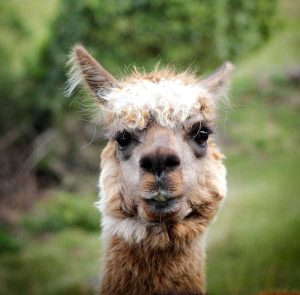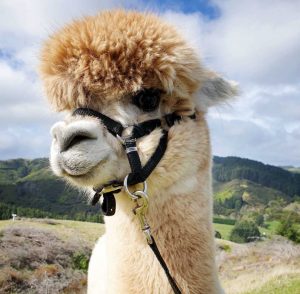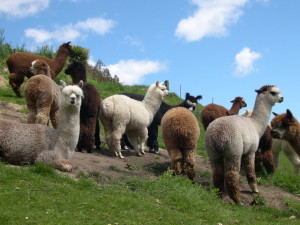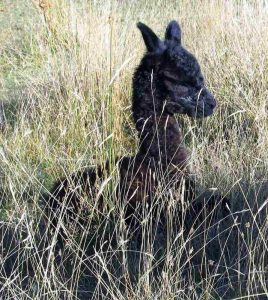Getting into Alpacas
When you are thinking about purchasing an animal it is important to consider for what purpose you want the animal and contact a number of breeders to check what they have available for you. Note here that alpacas are herd animals and therefore you always need at least 2 animals.
Many people purchase a couple of low cost wethers (castrated males) to begin with and once they feel confident that alpacas really are extremely easy to manage, they take the next step to start a breeding herd.
Regular Care
Apart from being adorable creatures, alpacas are easy care animals, especially compared to other livestock. Many owners run alpacas as a lifestyle or hobby, and one person can easily perform the necessary work in a couple of hours per week to look after say a herd of 20 alpacas.
On a less regular basis, alpacas may require the trimming of their toenails depending upon the ground and floor that they walk on, as well as some regular vaccinations. These vaccinations are required 2-4 times/year, depending upon if you run alpacas mixed with other livestock, such as cattle or sheep. Injections are administered either through a subcutaneous injection, normally under the skin around the shoulder, or orally. We administer these injections ourselves, like most alpaca owners. However you can always get someone else with experience do this if you don’t feel comfortable.
Farm Lay-out and Fencing
 The farm lay-out and facilities needed to keep alpacas is fairly simple. In most areas of New Zealand the animals don’t need additional shelter apart from trees or a basic shed to protect them from the strong cold and wet winds, and from the sun, especially when they just have been shorn. In case the crias (baby alpacas) are born during a cold period, it is advisable to give them a cover for the night.
The farm lay-out and facilities needed to keep alpacas is fairly simple. In most areas of New Zealand the animals don’t need additional shelter apart from trees or a basic shed to protect them from the strong cold and wet winds, and from the sun, especially when they just have been shorn. In case the crias (baby alpacas) are born during a cold period, it is advisable to give them a cover for the night.
The fencing requirements for alpacas are similar as for sheep. Standard 8 wire fences are in most cases sufficient, however some alpaca owners prefer to use netting. From our own experience, electric fences are not reliable due to the insulation qualities of the alpaca fleece.
Shearing
 Alpacas are normally shorn once a year in spring. Timing is important to ensure that they don’t have to go into summer with a thick coat, and that sufficient fleece has re-grown before the winter period.
Alpacas are normally shorn once a year in spring. Timing is important to ensure that they don’t have to go into summer with a thick coat, and that sufficient fleece has re-grown before the winter period.
Grazing and Feeding
Alpacas are light consumers, eating the equivalent of a sheep. This means that it takes very little acreage to support a sizable herd. Depending upon the quality of pasture, 1 acre can support 5 to 8 animals. The layout of interior fencing is therefore best set up in a manner that will take advantage of this and allow for rotational grazing practices. This is accomplished by creating several different subdivisions, or paddocks, within a given pasture. This provides for the best quality forage at any given time as well as giving the pasture a chance to recover after heavy grazing.
Breeding Alpacas

Alpacas are induced ovulators. This means that they can be mated at any time during the year. However due to the climatic condition in New Zealand and our location in the Lower North Island, we prefer to schedule birth to occur between October and April. However, especially breeders in the far North, get their alpaca babies (crias) all year round.
Females can be mated after around 12 months of age. The average gestation period is 11.5 months, however pregnancies that go for over a year are not uncommon.
Births are generally trouble free and most occur between 6am and 2 pm. Twins are extremely rare. The crias should be on their feet and nursing (colostrum!) within 2-3 hours.
Most crias can be weaned around 5-6 months of age. The females are usually re-mated 2-6 weeks after giving births.



